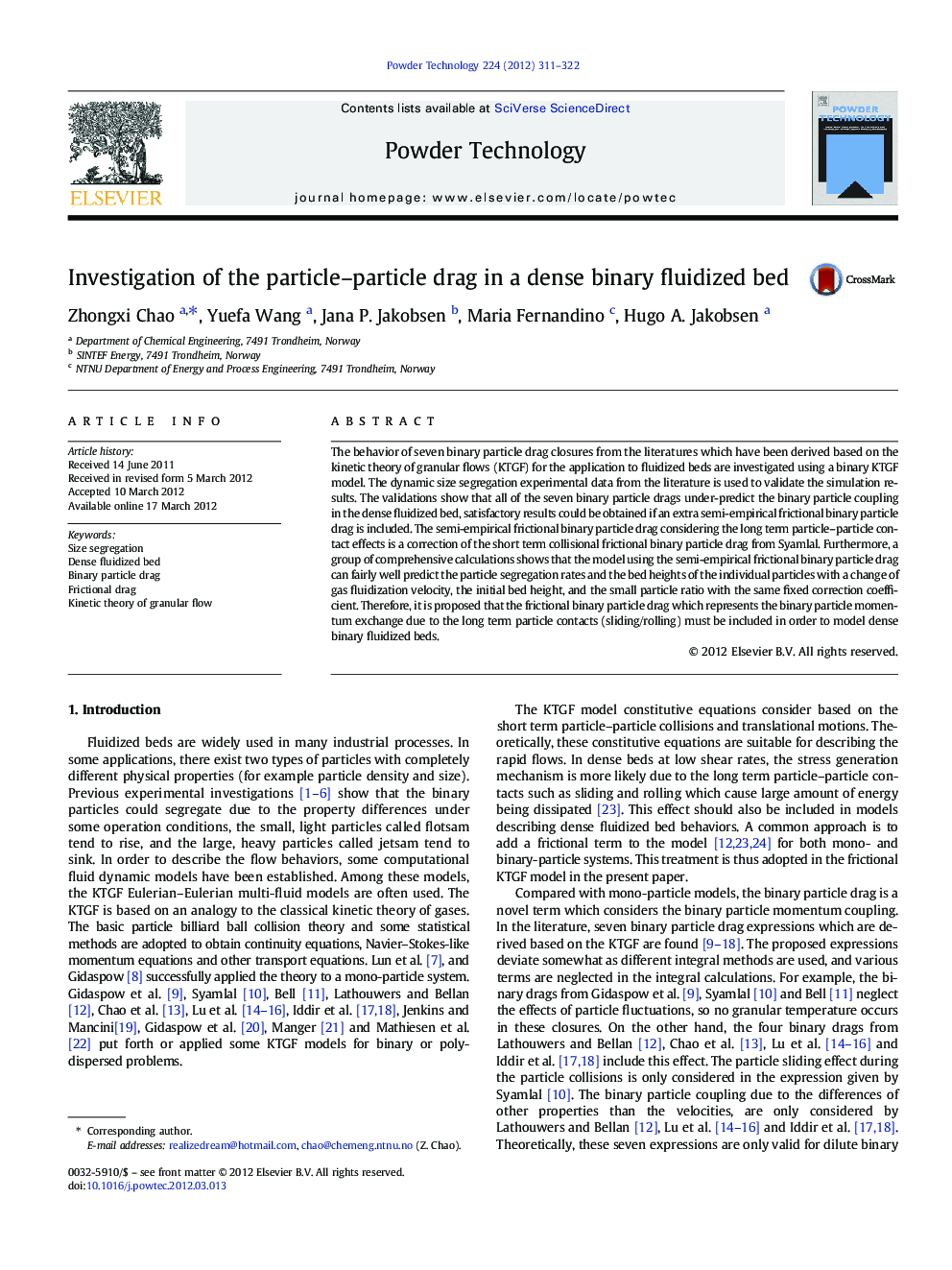| Article ID | Journal | Published Year | Pages | File Type |
|---|---|---|---|---|
| 237191 | Powder Technology | 2012 | 12 Pages |
The behavior of seven binary particle drag closures from the literatures which have been derived based on the kinetic theory of granular flows (KTGF) for the application to fluidized beds are investigated using a binary KTGF model. The dynamic size segregation experimental data from the literature is used to validate the simulation results. The validations show that all of the seven binary particle drags under-predict the binary particle coupling in the dense fluidized bed, satisfactory results could be obtained if an extra semi-empirical frictional binary particle drag is included. The semi-empirical frictional binary particle drag considering the long term particle–particle contact effects is a correction of the short term collisional frictional binary particle drag from Syamlal. Furthermore, a group of comprehensive calculations shows that the model using the semi-empirical frictional binary particle drag can fairly well predict the particle segregation rates and the bed heights of the individual particles with a change of gas fluidization velocity, the initial bed height, and the small particle ratio with the same fixed correction coefficient. Therefore, it is proposed that the frictional binary particle drag which represents the binary particle momentum exchange due to the long term particle contacts (sliding/rolling) must be included in order to model dense binary fluidized beds.
Graphical abstractFigure optionsDownload full-size imageDownload as PowerPoint slideHighlights► Dense binary fluidized beds are modeled. ► Weak coupling using collisional binary particle drag. ► Reasonable coupling using frictional binary particle drag. ► Long term sliding and rolling particle contacts considered. ► A semi-empirical frictional binary particle drag is proposed.
